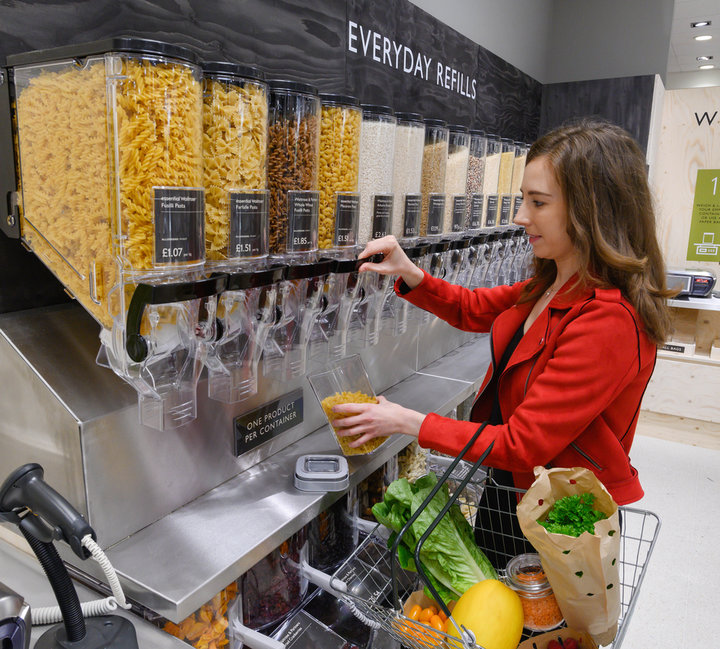LEGISLATION
What the packaging industry needs to know about Extended Producer Responsibility
In around two years’ time, the Extended Producer Responsibility (EPR) policy is set to replace the existing Packaging Recovery Note (PRN) system in the UK. Jessica Paige considers what the switch will entail and asks Patrick Willink, MD of the Colourform division at advanced materials and paper products group James Cropper, how packaging companies can prepare.
S
ix months ago, the UK Government confirmed its plans to introduce an EPR scheme for packaging. With a circular economy in mind, the policy will compel producers to pay the full costs for dealing with their packaging once it becomes waste.
A subsequent consultation, which ran until June, invited discussion on specific proposals, including costs, producer obligations, regulations and recycling targets. The first-phase implementation of EPR is expected in 2023, replacing the PRN system that formed a key part of the Producer Responsibility Obligations (Packaging Waste) Regulations in 1997.
According to the Department for Environment, Food & Rural Affairs, the new policy is expected to “incentivise producers to design packaging that is easy to recycle and ensure they pay the full net cost of managing this packaging once it becomes waste”.
“This is in line with the polluter-pays principle,” DEFRA added.
What will change?
Under the current PRN system, producers are only responsible for funding the recycling of collected packaging. While the policy was initially designed to improve affordability and achieve national recycling targets, only 7% of the costs of post-consumer waste management operations in the UK are covered by these contributions.
With the new EPR scheme, producers’ will become responsible for the disposal of post-consumer products. Compliance costs are expected to increase by up to 20 times; however, the policy is expected to have a significant positive effect on the environment.
The increased costs and responsibility create an incentive for producers to design longer-lasting and sustainable products. Speaking to Inside Packaging, James Cropper’s Patrick Willink says: “This responsibility could, in principle, provide incentives to prevent waste at the source, promote product design for the environment and support the achievement of public recycling and materials management targets.”
“Essentially, the ongoing development of EPR schemes is important for achieving the goal of a circular economy. In Europe, it’s been lauded as a resounding success."

Waitrose began trialling its Unpacked scheme in 2019. Credit: Waitrose
EPR around the world
While EPR, which has been adopted in a range of industries including electronics and vehicles as well as packaging, is new to the UK, several countries have already adopted the scheme as a way to combat waste and improve recycling. The term EPR was coined by Thomas Lindhqvist, a Swedish professor who introduced the idea to the Swedish Ministry of Environment in 1990. One year later, It was introduced in Germany.
The Canada-Wide Action Plan for Extended Producer Responsibility (CAP-EPR) was adopted after years of struggling with waste, while a non-profit organisation, EPR Canada, was set up to ensure continued growth and improvement of EPR policies in the country.
The policy has also played major roles in achieving waste management targets in Australia, the US, and the Netherlands.
The policy has seen success in these countries, with not only recycling rates improving but also an alleviation of the financial burden on local authorities, who often do not have the resources to implement effective waste management programmes.
Industry response
“Signatory companies recognise EPR as a necessary part of the solution to create the circular economy for packaging,” according to Willink.
The Coca-Cola Co’s VP of global policy & sustainability, Michael Goltzman, concurs: "We support this statement on the important role that well-designed EPR systems can play in keeping packaging material out of the environment and in the circular economy,” he says. “Good EPR schemes can motivate businesses and help us achieve our circular economy targets.”
Willink’s advice to brand owners is to “ensure their fees are used to cover just direct costs to do with sorting, recycling and package collection.
“Ensuring that packaging is as easy to recycle as it can possibly be is key to managing the potential costs which come out of the consultation - and now is the time to act.”
Where do we start?
According to Willink, brands would do well by starting early. Current steps should include “looking at reducing the overall amount of packaging, removing unnecessary packaging or rethinking pack design, choosing renewable materials and ensuring that end-of-life packaging is easy to recycle by opting for mono-material solutions as well as using materials that can be recycled a number of times”.
“Being able to say that packaging used to be a coffee cup takes the idea of ‘being environmentally friendly’ from conceptual to the tangible in the mind of the consumer.”
By making these moves, packaging companies will be better prepared for EPR and for potentially more stringent legislation further down the road.
One less-intended yet equally important consequence of incorporating such solutions? Elevating your brand’s story with consumers in these environmentally-vital times.